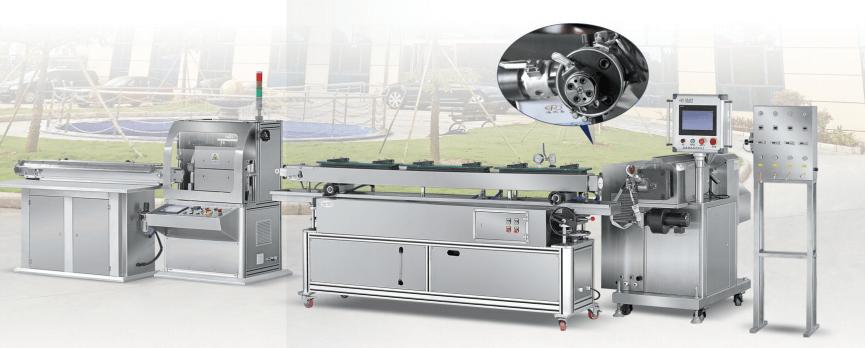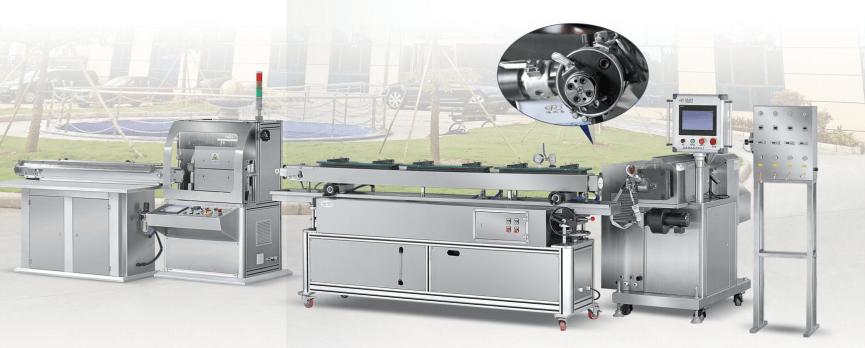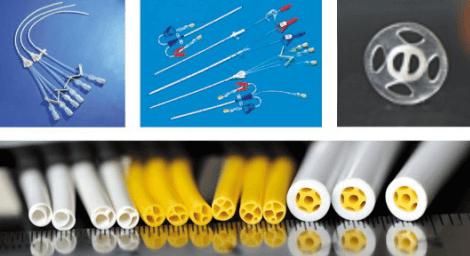
Everything about Medical CVC Tube
In modern medical practice, the use of central venous catheters (CVC) has become increasingly common due to their versatile applications and benefits. In this post, the author will give a brief discussion on the CVC tube and explore how the CVC tube is made.
What is A CVC Tube?
A CVC tube, also known as a central venous catheter or central line, is a medical device inserted into a large vein in the body to facilitate various medical treatments.
This catheter is composed of flexible material, often made of polyurethane or silicone, and is designed to be placed in one of the central veins, such as the subclavian, jugular, or femoral veins.
The main purpose of a CVC tube is to provide healthcare professionals with easy access to the patient's circulatory system, allowing for the administration of fluids, medications, blood products, and parenteral nutrition, as well as monitoring of central venous pressure and frequent blood sampling.
This catheter is composed of flexible material, often made of polyurethane or silicone, and is designed to be placed in one of the central veins, such as the subclavian, jugular, or femoral veins.
The main purpose of a CVC tube is to provide healthcare professionals with easy access to the patient's circulatory system, allowing for the administration of fluids, medications, blood products, and parenteral nutrition, as well as monitoring of central venous pressure and frequent blood sampling.
How Does the CVCTube Be Made?
The selected CVC material is processed through an extrusion machine. During extrusion, the material is heated and pushed through a specially designed-die to form a long, hollow tube with a consistent diameter.
The extruded tube will become the main body of the CVC catheter. Highrichja is a manufacturer and supplier of CVC tube extruders, offering a wide range or medical machine to the medical supply manufacturer.
The extruded tube will become the main body of the CVC catheter. Highrichja is a manufacturer and supplier of CVC tube extruders, offering a wide range or medical machine to the medical supply manufacturer.
What is A CVC Used for?
The applications of CVC tubes are wide-ranging and are commonly employed in critical care settings, surgical procedures, and patients with chronic medical conditions. Some of the key uses of CVC tubes include:
●Administration of Medications: CVCs enable the delivery of medications that may irritate peripheral veins or require rapid distribution throughout the body.
●Fluid Resuscitation: In cases of severe dehydration or shock, CVCs are utilized to rapidly infuse large volumes of fluids.
●Parenteral Nutrition: Patients unable to take adequate nutrition orally may receive essential nutrients through the CVC directly into the bloodstream.
●Hemodynamic Monitoring: CVCs allow constant monitoring of central venous pressure and offer valuable information on the patient's cardiovascular status.
●Blood Sampling: Frequent blood tests can be conducted without the need for repeated needle insertions.
●Dialysis: CVCs are employed for temporary hemodialysis in patients with acute kidney injury or chronic kidney disease.
●Administration of Medications: CVCs enable the delivery of medications that may irritate peripheral veins or require rapid distribution throughout the body.
●Fluid Resuscitation: In cases of severe dehydration or shock, CVCs are utilized to rapidly infuse large volumes of fluids.
●Parenteral Nutrition: Patients unable to take adequate nutrition orally may receive essential nutrients through the CVC directly into the bloodstream.
●Hemodynamic Monitoring: CVCs allow constant monitoring of central venous pressure and offer valuable information on the patient's cardiovascular status.
●Blood Sampling: Frequent blood tests can be conducted without the need for repeated needle insertions.
●Dialysis: CVCs are employed for temporary hemodialysis in patients with acute kidney injury or chronic kidney disease.
Why Use A CVC Instead of A PICC?
A peripherally inserted central catheter (PICC) is another commonly used central line, but it differs from a CVC in several aspects. While both devices serve similar purposes, there are instances where a CVC is preferred over a PICC:
Urgent and Critical Situations: In emergencies or critically ill patients, a CVC can be placed more quickly and efficiently than a PICC, providing immediate access for life-saving interventions.
Short-Term Use: CVCs are often preferred for short-term treatments and critical care, whereas PICCs are typically used for longer-term therapy.
Limited Peripheral Venous Access: Patients with compromised peripheral veins due to repeated use or medical conditions may require a CVC for continuous treatment.
Multiple Infusions: CVCs are suitable when multiple medications or fluids need to be administered simultaneously, as they have multiple lumens.
Urgent and Critical Situations: In emergencies or critically ill patients, a CVC can be placed more quickly and efficiently than a PICC, providing immediate access for life-saving interventions.
Short-Term Use: CVCs are often preferred for short-term treatments and critical care, whereas PICCs are typically used for longer-term therapy.
Limited Peripheral Venous Access: Patients with compromised peripheral veins due to repeated use or medical conditions may require a CVC for continuous treatment.
Multiple Infusions: CVCs are suitable when multiple medications or fluids need to be administered simultaneously, as they have multiple lumens.
Is CVC the Same as PICC?
While both CVCs and PICCs are types of central venous catheters, they are not the same. The key differences between the two lie in their insertion sites and catheter length:
Insertion Site: CVCs are inserted into central veins, located near the heart, such as the subclavian, jugular, or femoral veins. In contrast, PICCs are inserted into peripheral veins (often in the arm) and advanced into larger central veins.
Catheter Length: CVCs are generally longer than PICCs, as they extend from the insertion site to the superior vena cava or right atrium. PICCs are shorter and typically terminate in the central veins.
Insertion Site: CVCs are inserted into central veins, located near the heart, such as the subclavian, jugular, or femoral veins. In contrast, PICCs are inserted into peripheral veins (often in the arm) and advanced into larger central veins.
Catheter Length: CVCs are generally longer than PICCs, as they extend from the insertion site to the superior vena cava or right atrium. PICCs are shorter and typically terminate in the central veins.
How Long Can CVC Line Stay in?
The duration for which a CVC line can remain in place varies depending on the patient's condition, treatment requirements, and the risk of complications. In general, CVCs can be used for short-term or long-term periods:
Short-term CVCs: These are usually intended for temporary treatments and are removed once the required therapy is completed. Short-term CVCs may stay in place for a few days to several weeks.
Long-term CVCs: In some cases, patients with chronic medical conditions may require long-term CVC placement. These lines can remain in place for several weeks to several months, but regular monitoring and maintenance are necessary to minimize the risk of infections and other complications.
Short-term CVCs: These are usually intended for temporary treatments and are removed once the required therapy is completed. Short-term CVCs may stay in place for a few days to several weeks.
Long-term CVCs: In some cases, patients with chronic medical conditions may require long-term CVC placement. These lines can remain in place for several weeks to several months, but regular monitoring and maintenance are necessary to minimize the risk of infections and other complications.
Conclusion
Central venous catheters (CVCs) play a vital role in modern medical practice, providing healthcare professionals with a reliable means of delivering essential treatments and monitoring patients' health.
By the way, as with any medical procedure, proper insertion, care, and monitoring are crucial to ensure the safety and efficacy of CVC lines.
By the way, as with any medical procedure, proper insertion, care, and monitoring are crucial to ensure the safety and efficacy of CVC lines.





